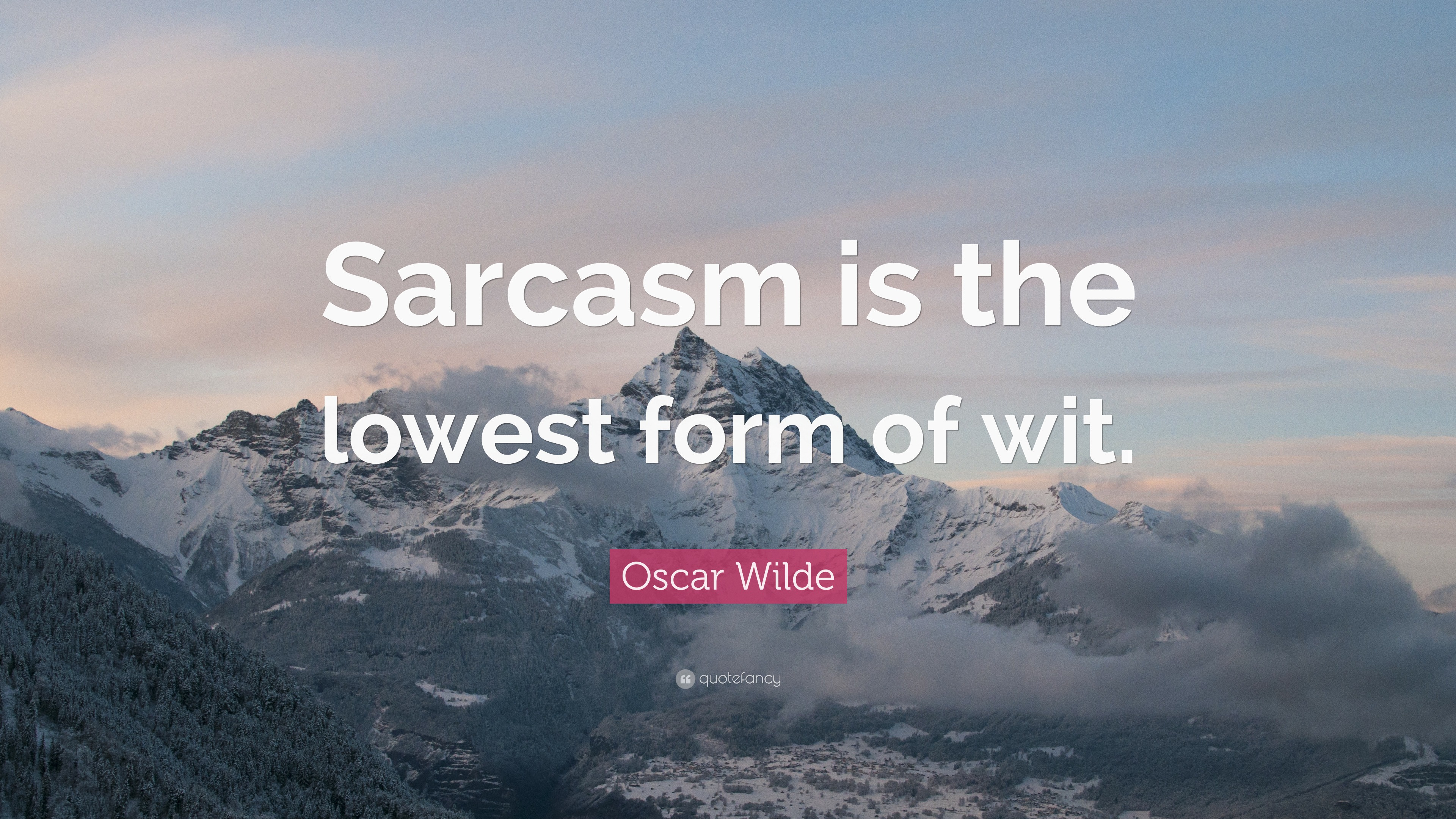Do you ever find yourself deploying a cutting remark, cloaked in humor, only to see it land with the grace of a lead balloon? Mastering sarcasm is more than just delivering a witty line; it's an intricate dance of timing, tone, and understanding that separates the masters from the merely snide.
At its core, sarcasm is the caustic use of words, often employed humorously, to mock or convey contempt towards someone or something. It's a linguistic tightrope walk, where the speaker says one thing while meaning quite the opposite. This inherent ambivalence is what gives sarcasm its bite, but also its potential for misinterpretation. While not always malicious, sarcasm certainly isn't for the faint of heart. It demands a certain level of intellectual agility, both from the speaker and the listener, to navigate the nuances of implied meaning.
When wielded effectively, sarcasm can be a powerful tool. It can facilitate intellectually stimulating discussions, allowing individuals to connect with others who appreciate its unique brand of humor. Some view sarcasm as the language of those who challenge societal norms and expectations, using it to poke holes in pretense and expose hypocrisy. The art lies in finding the delicate balance between humor and insult, transforming a potentially offensive remark into a moment of shared wit and entertainment.
- Your Guide To Flyertalk Miles Points And Travel Secrets Unveiled
- Hot Steamy The Best Adult Web Series You Need To Watch
Consider Oscar Wilde, a true connoisseur of wit and sarcasm. His play, "The Importance of Being Earnest," is a masterclass in the art of sarcastic humor, where characters use it relentlessly to satirize Victorian society's rigid conventions. Even something as seemingly straightforward as marriage becomes fodder for Wilde's sharp wit, as one character observes that a man seeking matrimony should know either everything or absolutely nothing. This playful subversion of expectations is characteristic of Wilde's genius and highlights the power of sarcasm to challenge accepted norms.
Sarcasm also finds its place within the broader literary genre of satire. Satire employs irony, wit, and sometimes sarcasm to expose humanity's vices and foibles, aiming to inspire change or reform through ridicule. It's a potent tool for social commentary, capable of embarrassing, denouncing, or discrediting aspects of society that warrant scrutiny. Writers use satire to draw attention to social and political issues, prompting reflection and challenging commonly held beliefs.
Calvin Coolidge, the 30th President of the United States, was another notable practitioner of sarcasm. His clever wit and ability to poke fun at the political system made him a beloved figure during his time. Even today, his humorous quotes continue to entertain and serve as a reminder that even in serious times, a little laughter can go a long way. Coolidge's example demonstrates how sarcasm can be used to humanize even the most powerful figures and to offer a fresh perspective on complex issues.
In our everyday lives, social-emotional learning (SEL) plays a crucial role in helping us navigate social situations with empathy, understanding, and effective communication. Sarcasm, with its inherent complexity, adds another layer to these interactions. It requires us to be attuned to our audience, to read the room, and to know when to deploy our wit and when to refrain. It's about being as perceptive to our social environment as a bat is to its echolocation, sensing the subtle cues that indicate whether a sarcastic remark will be well-received or fall flat.
The maxim "Sarcasm is the lowest form of wit, but the highest form of intelligence," often attributed to Oscar Wilde, raises a fundamental question: Is sarcasm truly a sign of intelligence, or merely a crutch for those lacking in genuine humor and empathy? The relationship between sarcasm and intelligence is a complex one, worthy of careful consideration.
Wit, in general, involves clever and humorous observations or expressions, often showcasing intelligence. Sarcasm, while also humorous, tends to convey contempt or ridicule through irony or sharpness. It's a more pointed form of wit, often used to highlight flaws or inconsistencies in a target. This inherent edge is what makes sarcasm both appealing and potentially dangerous.
To truly master sarcasm, one must possess a quick mind, a sharp wit, and a deep understanding of human nature. It's an art form that requires both intelligence and emotional awareness. When delivered effectively, a sarcastic comment can be both hilarious and insightful, leaving the recipient speechless. However, when mishandled, it can easily backfire, causing offense and damaging relationships.
One must remember Napoli's insightful exploration of sarcasm, revealing its cultural and communicative significance. Through a blend of humor and sharp wit, Napoli's work illuminates how sarcasm has become deeply embedded in our everyday interactions. Sarcasm, as Napoli elucidates, is not merely a collection of snide remarks; it's a complex form of communication that reflects our cultural values and social dynamics.
Sarcasm can be viewed as the art of verbal irony, a means of adding humor, satire, and an element of clever mockery to everyday conversations. At its best, the intellectual insult is a form of art, capable of provoking thought, challenging perspectives, and even bringing about change. Like any art form, its true value lies not just in its execution, but in how it makes us think and feel.
Using sarcasm and irony can be effective techniques for engaging in banter, but its important to use them with care. Use tone and body language to ensure that your intent is clear. Sarcasm delivered with a smile and a playful tone is far less likely to be misinterpreted than sarcasm delivered with a frown and a harsh voice.
Sarcasm, like any tool, can be used for good or ill. It can be a weapon of cruelty, used to belittle and demean. Or it can be a tool of empowerment, used to challenge injustice and promote social change. The key lies in using it responsibly and with a clear understanding of its potential impact.
Effective satire requires a deep understanding of the subject matter you're critiquing. Only then can you craft a truly insightful and impactful satirical piece. The art of sarcastic humor and wit is really the essence of snarkiness. Snarkiness is a spicy blend of humor and sarcasm that can turn an ordinary conversation into a delightful roast. Its not just about tossing out witty remarks; it illuminates the art of observation, where ones sharp eye turns mundane occurrences into punchlines.
Satire is the art of using humor, sarcasm, wit, or irony to criticize a person, work, action, event, or institution. Satire is intended to embarrass, denounce, or discredit an aspect of society in a truly humiliating way. Writers use satire to draw attention to social and political issues or to challenge commonly accepted beliefs, values, or ideas.
Ultimately, the effectiveness of sarcasm depends on a variety of factors, including the relationship between the speaker and the listener, the context of the situation, and the cultural norms at play. What might be considered witty banter in one culture could be seen as offensive in another. Therefore, it's essential to be mindful of these factors when deploying sarcasm.
- Mia Sand From Bodybuilding Mom To Fitness Sensation
- Spicy Indian Web Series Adult Entertainment Whats Hot Now


